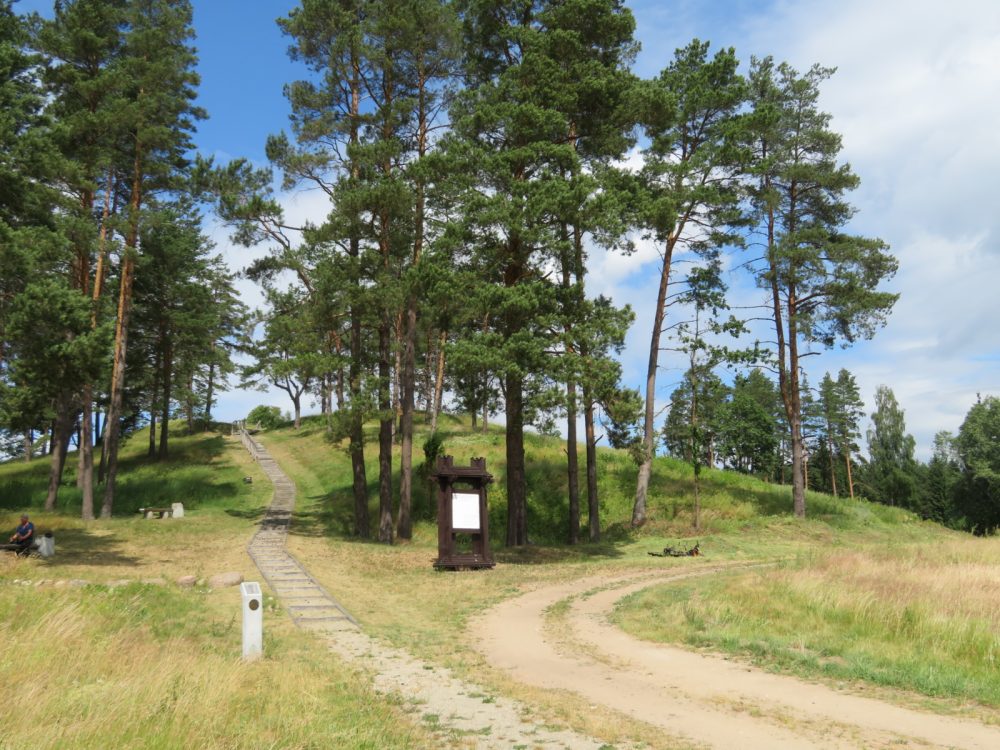Historical and Archaeological Significance:
Moškėnai Hillfort, also referred to as Laukupėnai Hillfort, is an exceptional landmark on the left bank of the Laukupė River. Its history spans from the late 1st millennium BCE to the 1st millennium CE. The hillfort, with 20–30 meter-high slopes and a nearly quadrangular platform, served as a defensive structure surrounded by ramparts and ditches. Archaeological excavations revealed a cultural layer up to 1 meter thick, containing over 470 artifacts, including stone, iron, and bronze tools, clay molds, spindles, and animal bones.
Between 1909 and 1911, L. Kšivickis studied a significant portion of the hillfort’s platform. The research demonstrated that the site had undergone multiple reconstructions: the original oval platform was expanded, ramparts and stone pavements were rebuilt, and the cultural layer reflects a complex history. At the base of the hillfort, a settlement from
the 4th to 13th centuries was discovered, yielding corded and coarse pottery, animal bones, and other items.
Cultural Importance:
Beyond its historical significance, Moškėnai Hillfort has cultural value. In earlier times, Pentecost celebrations were held here, an essential tradition for the local community. These festivities were closely tied to youth rites of passage: during Pentecost, girls were symbolically "inducted" into adulthood. The celebrations drew large crowds, making the hillfort a vibrant social hub.
Tourism and Accessibility:
Today, Moškėnai Hillfort is well-equipped for visitors, featuring wooden stairs, railings, and a parking area. It offers an excellent opportunity to delve into Lithuania's history, admire the natural surroundings, and connect with ancient traditions. The hillfort remains a vital part of the region's cultural and historical heritage, attracting history enthusiasts and tourists alike.




 Entertainment
Entertainment
 Sightseeing
Sightseeing
 Food establishments
Food establishments





























 55.968245, 25.439001
55.968245, 25.439001
 Get directions
Get directions









